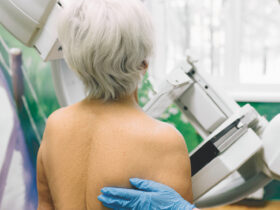 Southwest Florida: We’re the envy of the country for our year-round warmth and glorious rays of sunshine. But all those outdoor activities come with plenty of caution. We face a higher risk of skin cancer, not to mention sunburn and heat stroke.
Southwest Florida: We’re the envy of the country for our year-round warmth and glorious rays of sunshine. But all those outdoor activities come with plenty of caution. We face a higher risk of skin cancer, not to mention sunburn and heat stroke.
About one in five Americans will develop skin cancer during their lifetime, according to the Skin Cancer Foundation. Melanoma, the most serious type of skin cancer, usually affects people who have overexposure to sunlight.
Who else faces the biggest danger?
“People who are very fair-skinned, that classic Irish look, are at the highest risk,” says Lee Health surgeon William Kokal, M.D. “Also, anyone who works outside for long periods of time—fishing captains, lifeguards, landscapers—and doesn’t use protective sunscreen is at risk.”
Sunscreen may the first place to start. But which number should you apply? And how often does it wear off? Do swimming and sweating affect it? All good questions.
Sunscreen by the numbers
The SCF recommends sunscreen of SPF 15 or higher. Dr. Kokal says highly rated sunscreens guard against ultraviolet A (longwave—UVA) and ultraviolet B (shortwave— UVB) rays. “Check the sunscreen to make sure it protects against both types of sun ray,” Dr. Kokal says. “At some point, the protection factor is not worth the extra cost. It’s better to buy SPF 50 than 100, and reapply it.”
Are you planning on lots of outdoor activity either for your job or your weekend plans? Use a water-resistant, broad-spectrum sunscreen with an SPF of 30 or higher, the SCF says.
Apply 1 ounce of sunscreen (about the amount that fills a shot glass) to your entire body 30 minutes before going outside. Then reapply every two hours or immediately after swimming or excessive sweating, the SCF says.
The American Academy of Dermatology stresses that you shouldn’t forget your neck, face, ears, tops of your feet, and legs. Don’t forget your lips. Thinning hair? Put some sunscreen up there or wear a hat.
And yes – you can get sunburned when it’s cloudy.
Cover your bases – and your body
Here are some ways to cover up when you are just casually out and about:
• Wear a broad-brimmed hat instead of a ball cap at the game to cover your face and neck as much as possible.
• Keep your sunglasses on during driving or on your morning walks or runs.
• Be sure your sunglasses are certified for blocking UV rays.
• Cover your arms and legs as much as possible with light, loose-fitting clothing, and take some time to understand what fabrics your clothes are made of. UV light can often penetrate clothes with bigger fibers. Twill, tweed, and denim are tightly woven fabrics, experts say. Synthetic fibers – lycra, nylon, acrylic, and rayon — are more protective than cotton and linen.
Stay away from tanning beds
Some research suggests that frequent tanning results in feelings of elation or relaxation – kind of like smoking or drinking –which may lead to more tanning.
That means it acts more like a bad habit! Stop before you start. Lying on the beach or by the pool to soak up the sun is doing more harm than good – lather up with sunscreen and take frequent shade breaks when you relax by the water.
Seek out the shade Planning an outdoor activity?
Do some reconnaissance so you and your family have a place to be cool. And you golfers out there stuck on the fairways and greens—might be tough to find shade, but be sure you remember the hat and sunscreen! It’s also tough to find shade while commuting.
Car windshields usually offer some protection from radiation, but side windows let in plenty of bad rays. Many retailers sell window film screens to help you as you drive.
Examine your skin
Take a close look at your skin, head-to-toe, each month to spot imperfections, moles that have changed color, sores, blemishes, or other marks you haven’t noticed before.
Skin cancer often appears as a mole that has gotten lighter or darker, is red or ulcerated, or has changed.
So what do you do when you find a spot?
Get your skin checked by a doctor immediately. The American Cancer Society stresses that the doctor will ask you about when you first found the spot and if it’s changed sizes, colors, or textures.
You may need a biopsy – a procedure where the doctor takes out tissue to check it for cancer. The ACS says there are different kinds of biopsies, and your doctor will be able to tell you which one is right for you. You may also need an x-ray or CAT scan.
Patients diagnosed with stage I melanoma can be treated with removal of the affected area. These patients have a high rate of recovery.
Find a cancer specialist today:
Want more information? Check out the Lee Health Cancer Institute: leehealth.org/cancercare
Lee Health:
Who We Are and What We Do
Part of the community for more than 100 years, Lee Health continues to stand at the forefront of healthcare in Southwest Florida. Today and in the future, we continue to meet your needs by showcasing new technology, convenient resources, and personalized care at hospitals and other locations throughout the region. We’ll keep you ready for the moments that matter.
Visit leehealth.org









